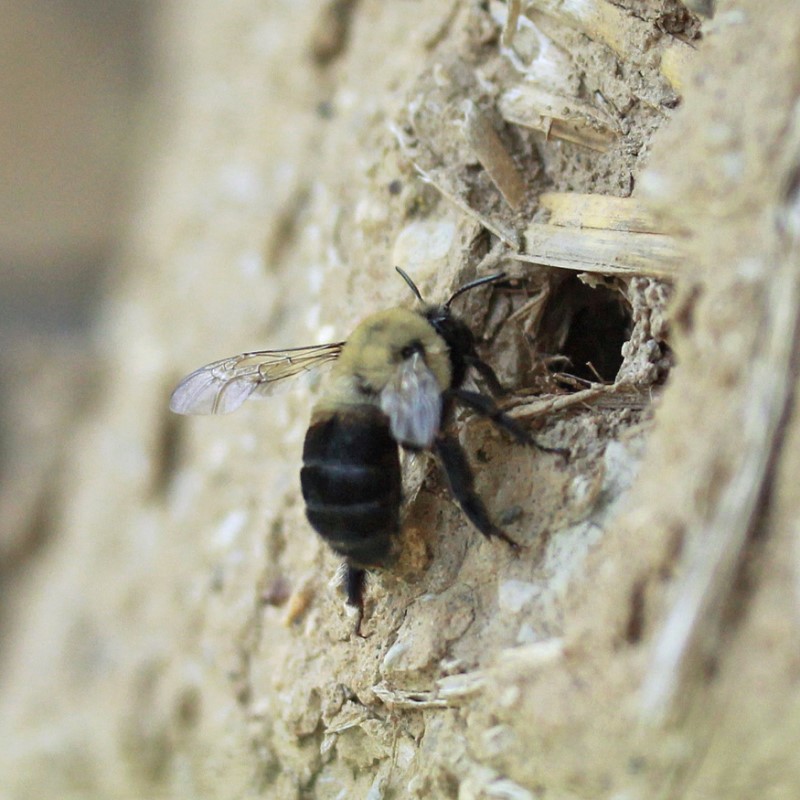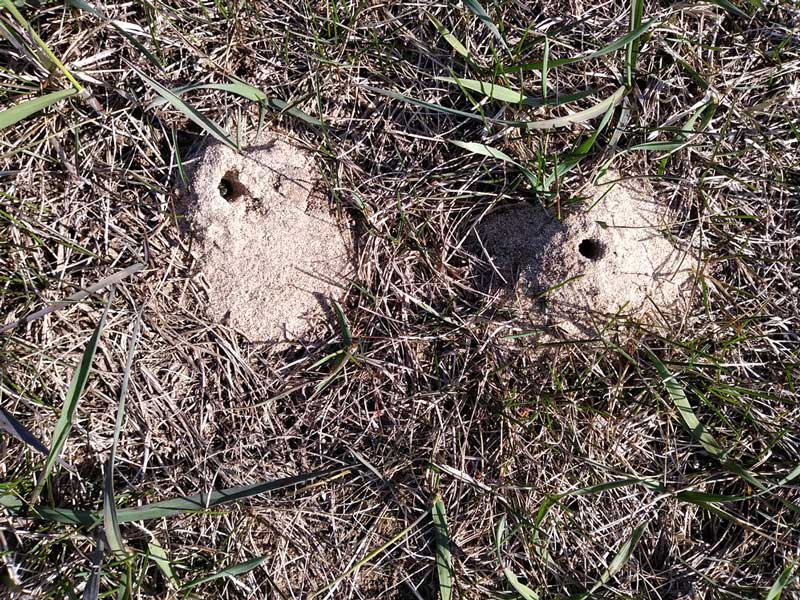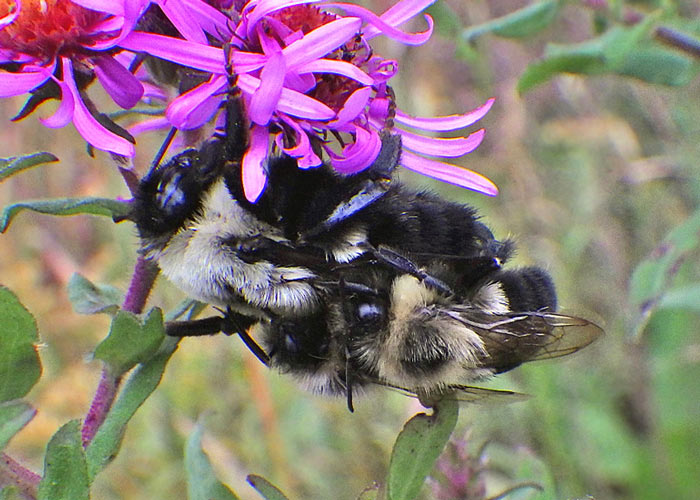Chimney Bee
Note: All links leave to external sites. Greetings, BugFans, In late spring, BugFan Sara sent some “Who-is-this-and-what-is-it-doing??” pictures—small “bumble bees” were excavating the outer surface of a clay bread oven in her back yard. (The BugLady gave Sara bonus points …


